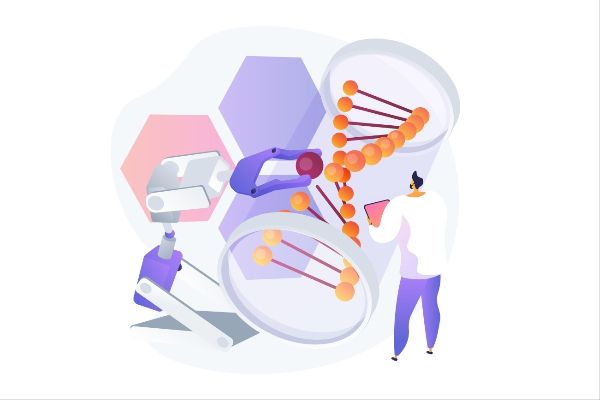Cell: Designing dual-acting drugs targeting GPCRs using a cheminformatics approach based on variable scaffolds
On March 28th, the journal "Cell" published an online research paper titled "Flexible Scaffold-based Cheminformatics Approach for Polypharmacological Drug Design". Researchers Wang Sheng, Cheng Jianjun, and Xu Huaqiang from three research teams reported a Flexible Scaffold-based Cheminformatics Approach (FSCA) for designing a dual-target, multi-efficacy active pharmaceutical compound IHCH-7179. This molecule harbors precursor drug properties with 5-HT1AR agonist activity and 5-HT2AR antagonist activity. In mouse models, it demonstrated promising results in improving mental and cognitive functions, offering new possibilities for the treatment of complex brain diseases.

Background
Lysergic acid diethylamide (LSD) is a semi-synthetic psychedelic drug belonging to the family of ergoline compounds. It was first synthesized by the Swiss chemist Albert Hofmann in 1938 from ergotamine, a natural alkaloid found in the ergot fungus that grows on rye. Hofmann accidentally ingested a small amount of LSD and personally experienced its profound psychological effects, leading to the discovery of its potential pharmacological actions.

Chemically, LSD is an extremely potent hallucinogen, able to produce significant psychological effects at very small doses. Its mechanism of action primarily involves a strong agonistic effect on serotonin (5-hydroxytryptamine or 5-HT) receptors in the central nervous system, particularly the 5-HT2A receptor. This action results in the abnormal synchronization of brain neural networks, leading to a range of complex psychological experiences, including visual and auditory distortions, altered thought patterns, emotional fluctuations, and a profound transformation of self-perception and reality. Despite discussions in some research regarding the potential use of LSD in psychotherapy (such as adjunct therapy for certain mental disorders), because of its intense hallucinogenic effects and potential risks, including adverse psychological reactions (such as panic, anxiety, psychotic symptoms), long-term psychological consequences (like Hallucinogen Persisting Perception Disorder, HPPD), and the unpredictability of use in uncontrolled settings, LSD is a strictly controlled illicit substance in most countries and regions.
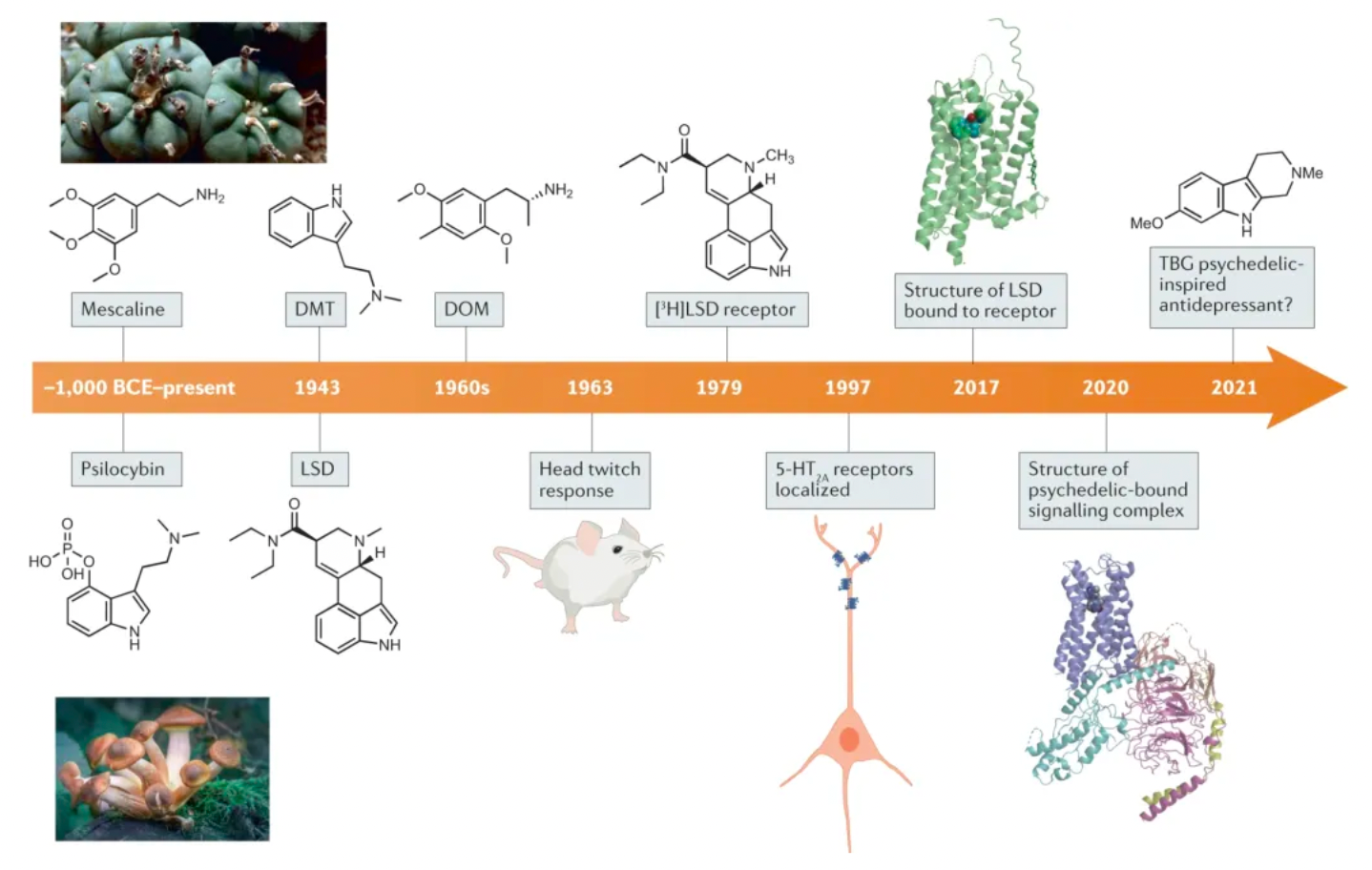
LSD, through its ergoline ring structure, binds to various aminergic GPCRs, particularly exhibiting a strong activating effect on the 5-HT2A receptor, which is associated with its hallucinogenic effects. Atypical antipsychotic drugs, such as risperidone, improve psychotic symptoms by antagonizing the 5-HT2A receptor, where the inclusion of a fluorophenyl group contributes to multi-target effects and antagonism of both serotonin and dopamine receptors.
In this study, researchers hope to generate synergistic therapeutic effects by designing bifunctional compounds that can simultaneously antagonize the 5-HT2AR and activate the 5-HT1AR.
Methods and Strategies
Researchers conducted an in-depth analysis of the binding conformations of LSD and atypical antipsychotic drugs on various serotonin receptors, thereby inspiring the process of searching for and designing flexible drug scaffold structures.
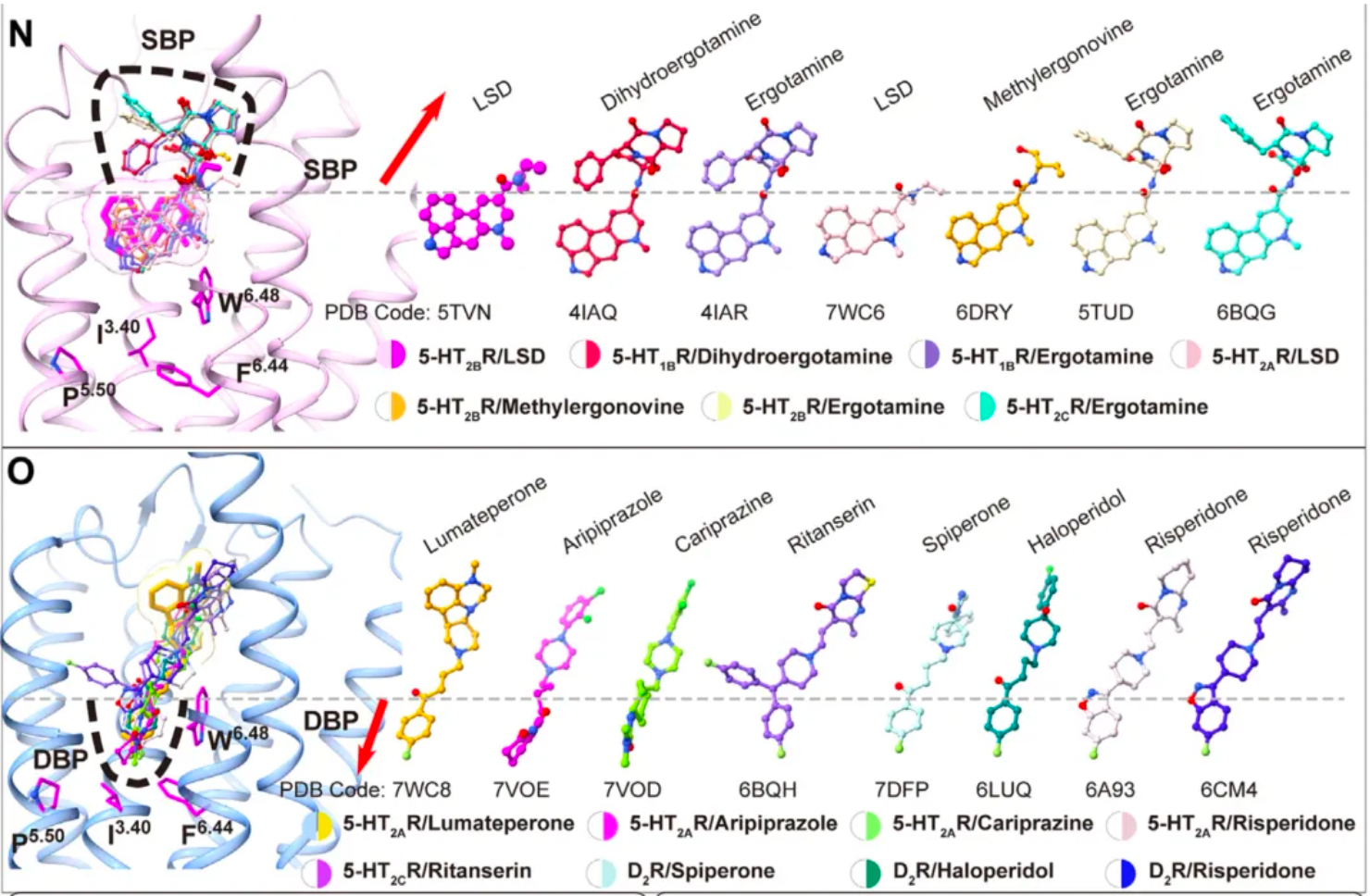
·Analysis of LSD binding pattern: Researchers used computational docking techniques to dock LSD with the structures of published serotonin receptors (except for 5-HT2AR and 5-HT2BR, whose structures in complex with LSD were resolved by the research team). The main pharmacophore of LSD (ergoline ring) occupies the orthosteric binding pocket (OBP) of different serotonin receptors in a flat conformation, where the positively charged nitrogen atom forms a stable interaction with the receptor residue D3.32 through a salt bridge. LSD’s typical binding manner on serotonin receptors is insertion upwards, with its main pharmacophore and secondary pharmacophore occupying the orthosteric binding pocket (OBP) and a shallow binding pocket (SBP), respectively.
·Analysis of atypical antipsychotic drugs binding pattern: Unlike LSD, atypical antipsychotic drugs typically adopt a downward insertion binding posture on 5-HT2A/2CR and dopamine receptor D2R, with their secondary pharmacophore penetrating into the deep binding pocket (DBP) formed between helices III, V, and VI. Parts of the secondary pharmacophore, such as the 4-fluorophenyl group, interact with the receptor’s P5.50-I3.40-F6.44 motif (PIF motif) as well as the "toggle switch" residue W6.48, which promotes these residues to maintain an inactive conformation, as observed in many inactive structures of aminergic G-protein-coupled receptors.
Through the comparison of different binding modes, researchers believe that the diverse binding postures of LSD and antipsychotic drugs on serotonin receptors suggest that the design of compounds with similar multitarget activity requires the ability to adapt to different receptor structural characteristics. These compounds should be capable of adjusting their conformations to fit various receptor binding pocket shapes. In addition, when designing new multitarget drugs, it is necessary to consider the conformational flexibility of the molecules, enabling them to adopt advantageous binding conformations on different receptors and achieve the intended pharmacological effects. Furthermore, for molecules with flexible, multi-cyclic skeletons, the C-N bond linking the cyclic structures is crucial; it helps the compound achieve the required conformational transitions in different receptor environments.

Based on these insights, researchers hypothesize that serotonin receptor ligands composed of a flexible tricyclic or tetracyclic skeleton connected to secondary pharmacophores may adopt distinctly different conformations when binding to specific serotonin receptors. These conformations can manifest as either "reaching upward" or "bending down." Due to the different conformations ligands adopt when interacting with various receptors, their pharmacological effects will exhibit characteristics of bitonic pharmacology. As a result, they could show agonistic effects on one serotonin receptor while potentially exhibiting antagonistic effects on another.

Researchers conducted their screening using two major compound libraries: first, the ChEMBL database, which contains 2.2 million compounds; and second, the Enamine company's on-demand synthesis library (offering 246,987 commercially available building blocks). All candidate compounds had to pass through a standardized screening process to ensure the selection of compounds with specific tricyclic or tetracyclic scaffolds that met design requirements. The screening criteria included the following characteristics:
(1) The candidate scaffolds must be tricyclic or tetracyclic systems: wherein the first ring is an aromatic or indole ring. These two ring structures have specific chemical properties and spatial arrangements conducive to forming stable interactions with specific regions of the serotonin receptor. The second ring is required to be a non-aromatic ring containing an sp3 hybridized nitrogen atom. The hybridization state of this nitrogen atom provides the ring structure with a certain degree of stereochemistry and electronic properties, which aids in forming specific interactions with other molecular parts. The third ring should contain a protonated nitrogen atom. This positively charged nitrogen atom is suitable for serving as a linking fragment and forming salt bridges with the conserved D3.32 amino acid residue within the serotonin receptor, enhancing the ligand's affinity and selectivity for the receptor.
(2) Conformational flexibility: During the screening process, particular attention was paid to the conformational flexibility provided by the C-N bond connecting the second and third rings. To quantify this flexibility, researchers used the "Plane of Best Fit (PBF)" score. The PBF score measures the propensity of a specific ring system in the unbound state to maintain either a flat or bent conformation. The criteria were set such that for flat conformations, the PBF score should be below 0.2; while for bent conformations, the PBF score should be above 0.4. This standard ensures that the selected scaffolds have significant conformational transition abilities in their free state, allowing them to adapt to the specific shape of the binding pocket when binding to different serotonin receptors, thereby realizing the expected pharmacological effect.
Structure-Guided Multi-Target Ligand Selection
Researchers, based on previously published structural data of 5-HT1AR and 5-HT2AR, discovered that the shallow binding pockets (SBP) of the two receptors possess larger space compared to the deep binding pockets (DBP), sufficient to accommodate the 4-fluorophenyl moiety commonly found as an auxiliary pharmacophore in antipsychotic drugs.
Consequently, they combined this known effective auxiliary pharmacophore, the 4-fluorophenyl group, with a flexible tricyclic or tetracyclic scaffold previously identified through computational screening. The aim was to create a compound whose primary pharmacophore (i.e., the scaffold) would bind tightly with the receptor's key binding regions, the orthosteric binding pockets, while the auxiliary pharmacophore would fit properly into the SBP, ensuring specific and effective binding on different receptors.
For the selection of an appropriate linker, researchers noted that, in known antipsychotic drugs such as lumateperone, spiperone, and haloperidol, a 4-carbon linker (such as butyryl) successfully bridged the 4-fluorophenyl SP with the scaffold PP, achieving optimal binding at the binding sites of D2R and 5-HT2AR. The 4-carbon linker in aripiprazole also effectively inserted its PP into the SBP of 5-HT1AR. These examples suggest that a 4-carbon linker might be an ideal universal connector to ensure precise matching of the SP with the SBP of 5-HT1AR and the PP with the DBP of 5-HT2AR.
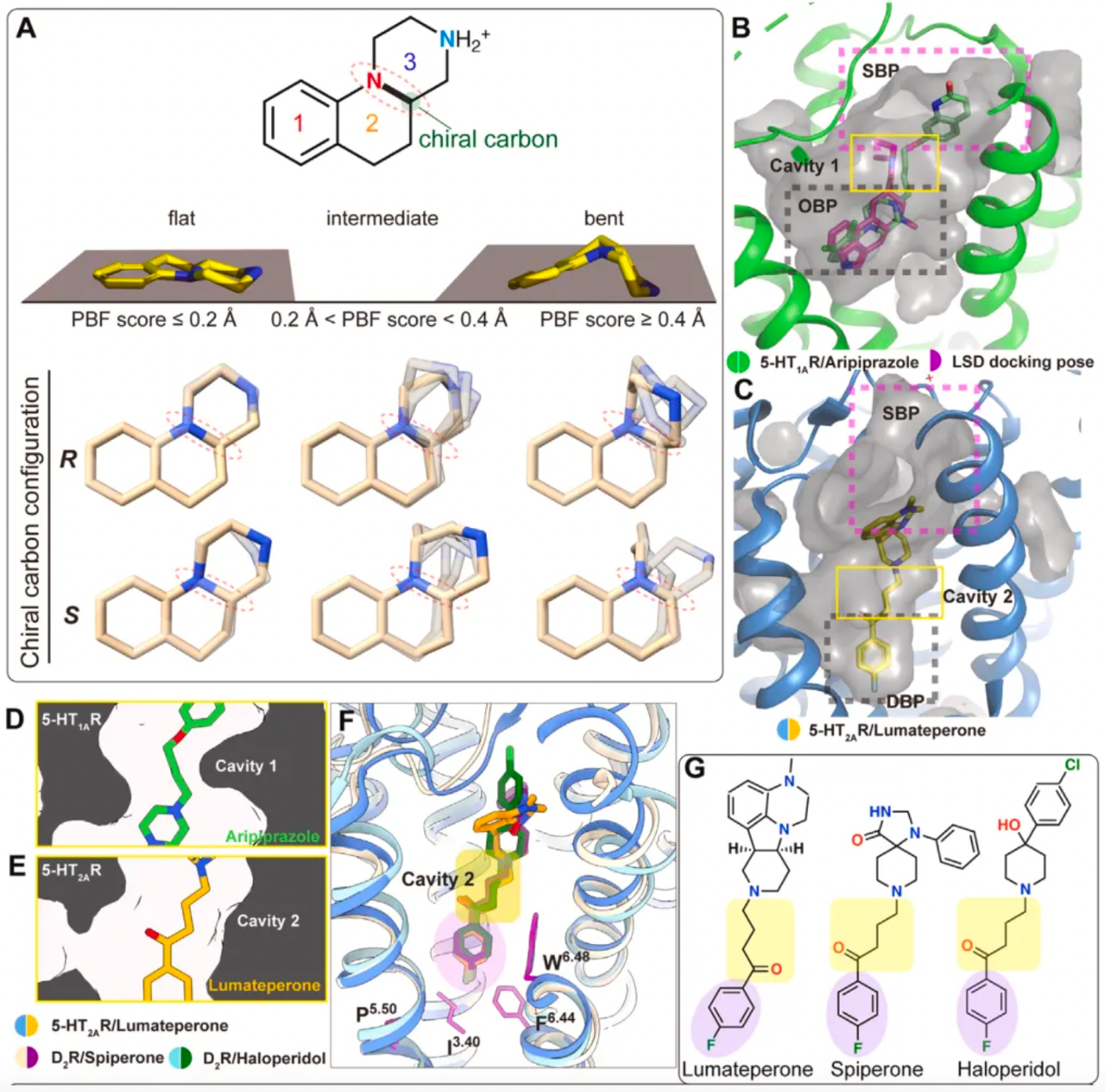
Subsequently, researchers evaluated and ranked 10 virtually synthesized compounds using molecular docking techniques to screen for the most suitable candidates for chemical synthesis. They integrated structural features such as the 4-fluorophenyl group, a 4-atom linker, and R or S configurations of chiral carbons.
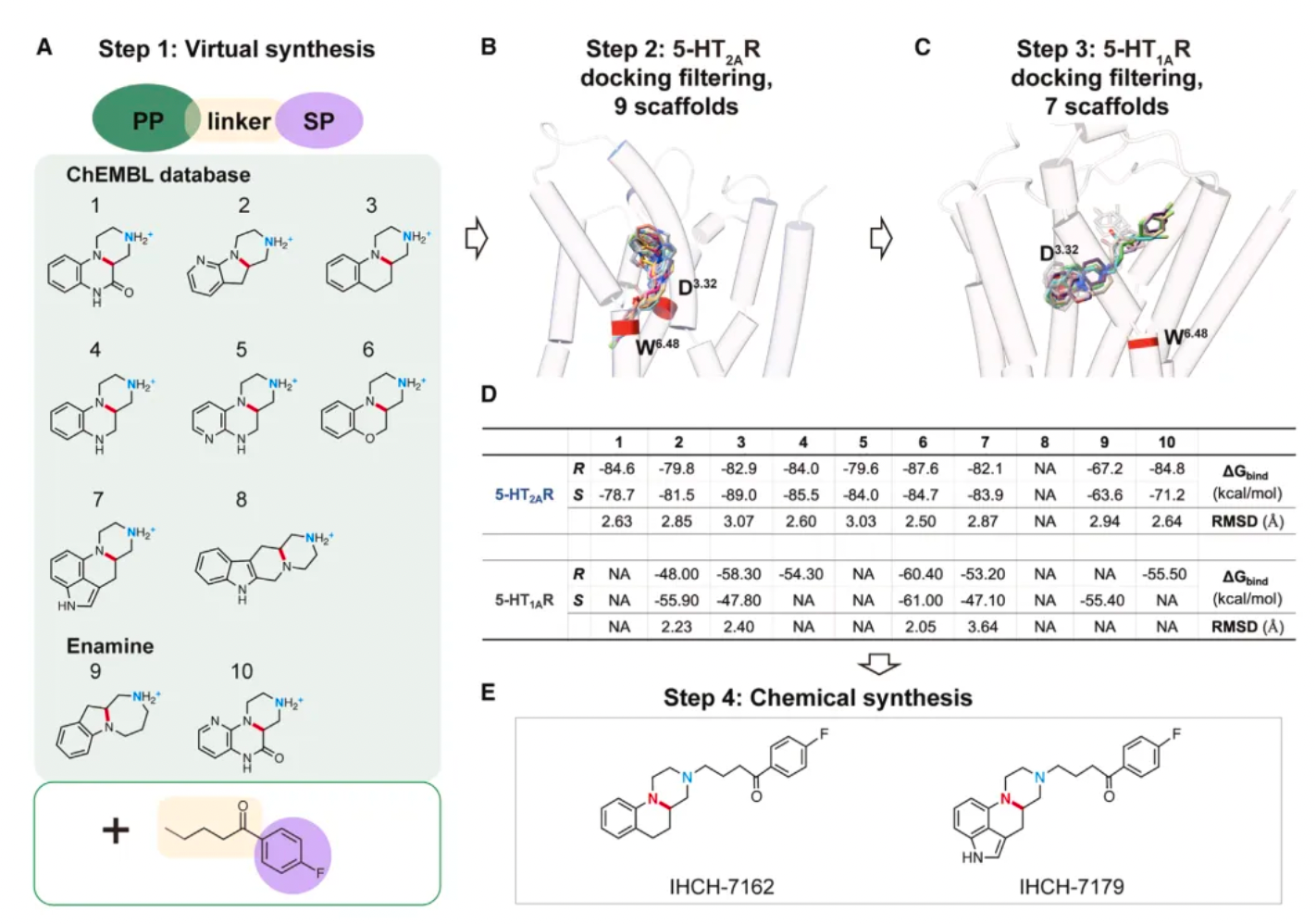
Through the experimental synthesis and activity assessment of compounds IHCH-7162 and IHCH-7179, researchers found that both IHCH-7162 and IHCH-7179 acted as agonists at the 5-HT1AR receptor. For IHCH-7179, it functioned as a dual antagonist at the 5-HT2AR receptor for both G protein signaling pathway and β-arrestin2 signaling pathway. Meanwhile, IHCH-7162 exhibited partial agonist activity for G protein signaling, as well as antagonist activity for β-arrestin2 signaling.

Researchers selected IHCH-7179 for further in vitro and in vivo evaluation because it demonstrates balanced agonistic activity at 5-HT1AR and antagonistic activity at 5-HT2AR. The tetracyclic framework of IHCH-7179 contains a chiral carbon atom, which results in the formation and identification of two enantiomers, namely (R)-IHCH-7179 and (S)-IHCH-7179. Both enantiomers exhibit agonistic activity on 5-HT1AR and antagonistic activity on 5-HT2AR.



